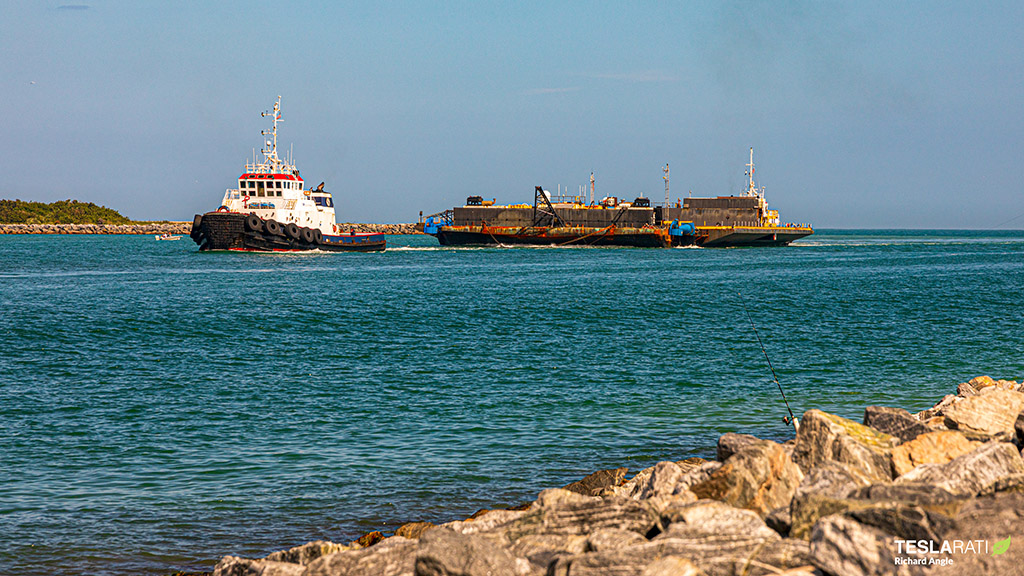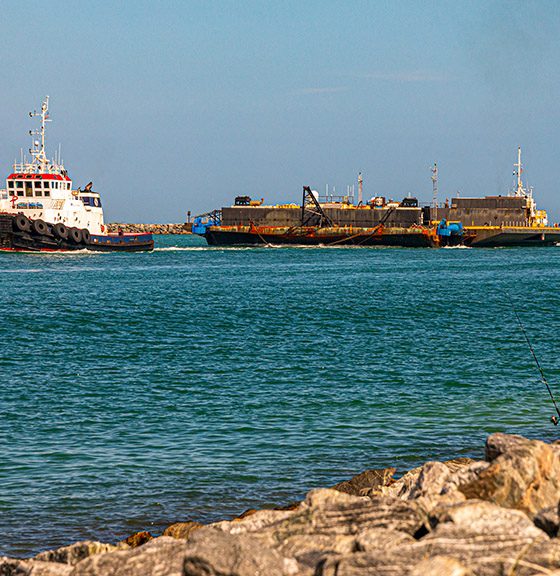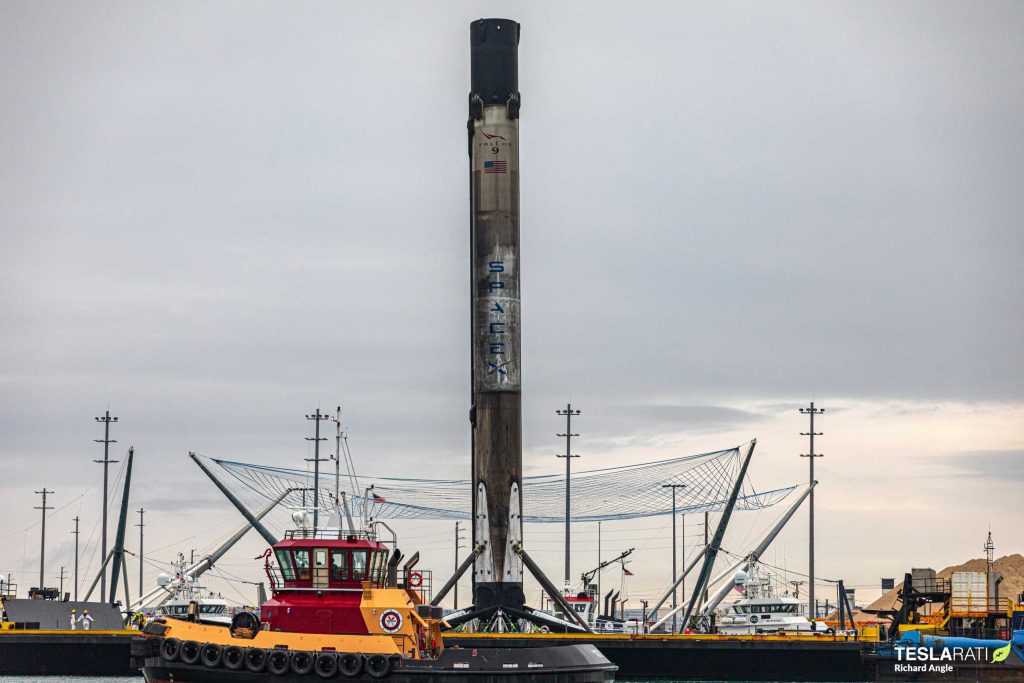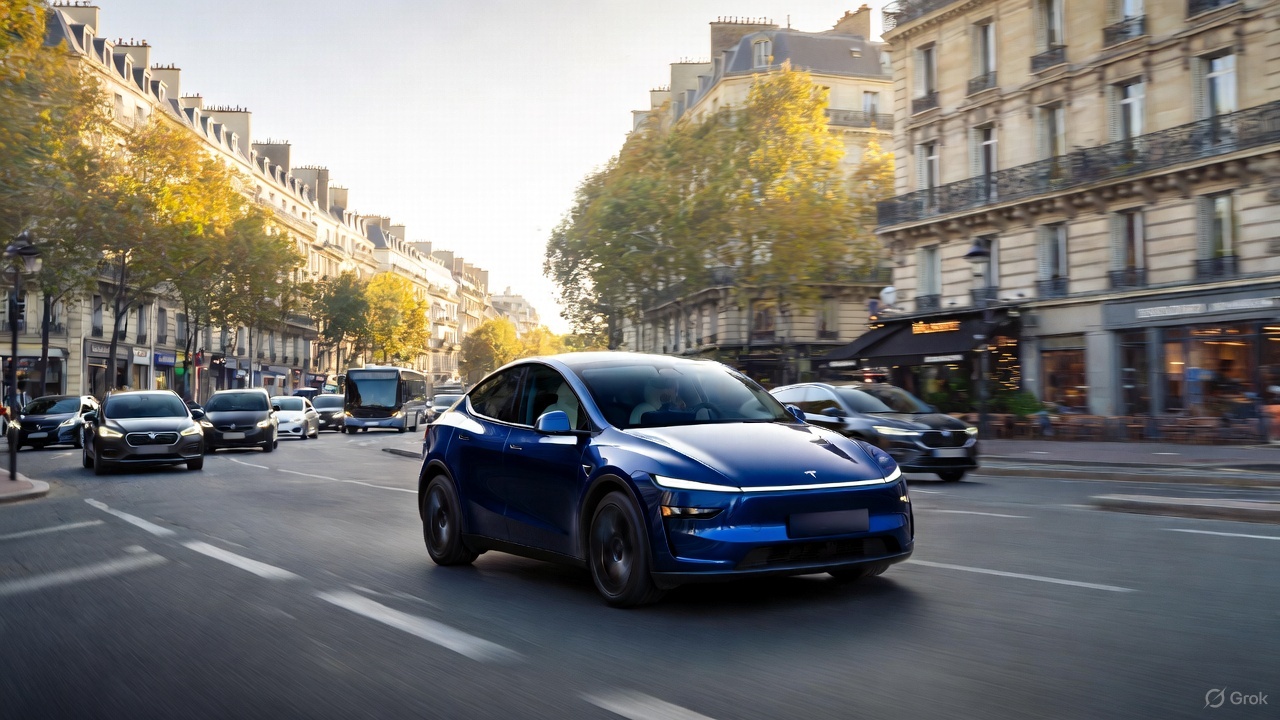

News
SpaceX readies for astronaut capsule recovery backup plan as rocket drone ship deploys to landing zone
Mission objectives of the SpaceX Crew Dragon Demo-2 test flight, have already commenced days ahead of the scheduled launch attempt. On Wednesday, May 27th at 4:33 pm EDT, Elon Musk’s rocket launching – and landing – company, SpaceX, will set out to achieve more firsts than it has ever attempted in one launch. The final Crew Dragon test flight will shuttle NASA astronauts Bob Behnken and Doug Hurley to the International Space Station for the very first time. Along with the primary mission objective to deliver the astronauts safely, many secondary objectives are built into the mission profile. One of which is autonomously turning the Falcon 9 booster around shortly after launch to land on a floating barge in the middle of the Atlantic Ocean.
During the late hours of Saturday, May 23rd, a trusted veteran member of the SpaceX fleet of recovery vessels, Tug Hawk, returned to Port Canaveral to transport SpaceX’s autonomous spaceport drone ship, Of Course I Still Love You (OCISLY) to the designated booster recovery zone some 510km downrange. It seems that Tug Hawk and its crew returned specifically to assist with the recovery efforts of SpaceX’s highest-profile launch to date as there was already another tug at Port Canaveral available to assist that was not used. The arrival was captured by long-time port activity documenter, Julia Bergeron, and reported by the unofficial Twitter SpaceX recovery vessel tracking account, SpaceXFleet.
The SpaceX recovery fleet portion of the Demo-2 mission got underway on the morning of Sunday (May 24th). Space Coast local Greg Scott was at Port Canaveral to capture Tug Hawk’s departure with OCISLY in tow just twelve hours after arriving. About an hour later, the OCISLY support vessel that carries cargo and crew essential for booster recovery efforts, GO Quest, departed. It will take Tug Hawk and OCISLY approximately two days to travel to the recovery zone, arriving about 24 hours before the launch attempt.
The propulsive landing of a booster at sea is not a new concept for SpaceX. However, it is a practice that can be somewhat tricky to get right every time due to a multitude of factors. Recently, SpaceX suffered the loss of the Falcon 9 boosters B1056 and B1048 following recent Starlink satellite launches. Both boosters suffered unrelated issues with high winds and software glitches resulting in failed attempts to stick the landing on OCISLY. However, SpaceX successfully demonstrated the reliability of the Falcon 9 landing capability with the flawless launch and landing of the April 22nd Starlink Falcon 9 B1051 booster.

A special circumstance of the Demo-2 mission is the added recovery requirements of the Crew Dragon capsule. With Crew Dragon launching from LC-39A at the Kennedy Space Center in Florida and splashdown designated for the Atlantic Ocean, various recovery zones span almost the entire length of the United States’ eastern seaboard and across the Atlantic Ocean to Ireland. Special recovery zones also are located throughout the Gulf of Mexico.
Typically, the recovery of a crew capsule would only be thought to occur upon mission end when it is on approach for splashdown after re-entry. However, the specially equipped SpaceX Crew Dragon recovery vessels, GO Searcher and GO Navigator, are required to be able to respond to a number of locations during launch and through the entire duration of Crew Dragon’s time on orbit chasing down the International Space Station prior to docking – for Demo-2 that will be nineteen hours. This is to ensure that in the unlikely event of Crew Dragon experiencing an emergency pad or launch abort scenario, the crew aboard can be safely rescued.
To this end, GO Searcher departed Port Canaveral days ago destined for the Naval Air Station in Pensacola on Florida’s west coast. GO Navigator will remain at Port Canaveral until Crew Dragon returns for a splashdown following the conclusion of Demo-2. Dual Dragon recovery vessels stationed on either side of Florida ensures that Hurley and Behnken can be rescued should they require emergency recovery.
Should Demo-2 pass SpaceX’s upcoming final Launch Readiness Review scheduled for Monday, May 25th, all will proceed toward the launch attempt on Wednesday, May 27th at 4:33 pm EDT.
Check out Teslarati’s newsletters for prompt updates, on-the-ground perspectives, and unique glimpses of SpaceX’s rocket launch and recovery processes.

News
Man credits Grok AI with saving his life after ER missed near-ruptured appendix
The AI flagged some of the man’s symptoms and urged him to return to the ER immediately and demand a CT scan.

A 49-year-old man has stated that xAI’s Grok ended up saving his life when the large language model identified a near-ruptured appendix that his first ER visit dismissed as acid reflux.
After being sent home from the ER, the man asked Grok to analyze his symptoms. The AI flagged some of the man’s symptoms and urged him to return immediately and demand a CT scan. The scan confirmed that something far worse than acid reflux was indeed going on.
Grok spotted what a doctor missed
In a post on Reddit, u/Tykjen noted that for 24 hours straight, he had a constant “razor-blade-level” abdominal pain that forced him into a fetal position. He had no fever or visible signs. He went to the ER, where a doctor pressed his soft belly, prescribed acid blockers, and sent him home.
The acid blockers didn’t work, and the man’s pain remained intense. He then decided to open a year-long chat he had with Grok and listed every detail that he was experiencing. The AI responded quickly. “Grok immediately flagged perforated ulcer or atypical appendicitis, told me the exact red-flag pattern I was describing, and basically said “go back right now and ask for a CT,” the man wrote in his post.
He copied Grok’s reasoning, returned to the ER, and insisted on the scan. The CT scan ultimately showed an inflamed appendix on the verge of rupture. Six hours later, the appendix was out. The man said the pain has completely vanished, and he woke up laughing under anesthesia. He was discharged the next day.
How a late-night conversation with Grok got me to demand the CT scan that saved my life from a ruptured appendix (December 2025)
byu/Tykjen ingrok
AI doctors could very well be welcomed
In the replies to his Reddit post, u/Tykjen further explained that he specifically avoided telling doctors that Grok, an AI, suggested he get a CT scan. “I did not tell them on the second visit that Grok recommended the CT scan. I had to lie. I told them my sister who’s a nurse told me to ask for the scan,” the man wrote.
One commenter noted that the use of AI in medicine will likely be welcomed, stating that “If AI could take doctors’ jobs one day, I will be happy. Doctors just don’t care anymore. It’s all a paycheck.” The Redditor replied with, “Sadly yes. That is what it felt like after the first visit. And the following night could have been my last.”
Elon Musk has been very optimistic about the potential of robots like Tesla Optimus in the medical field. Provided that they are able to achieve human-level articulation in their hands, and Tesla is able to bring down their cost through mass manufacturing, the era of AI-powered medical care could very well be closer than expected.
News
Tesla expands Model 3 lineup in Europe with most affordable variant yet
The Model 3 Standard still delivers more than 300 miles of range, potentially making it an attractive option for budget-conscious buyers.

Tesla has introduced a lower-priced Model 3 variant in Europe, expanding the lineup just two months after the vehicle’s U.S. debut. The Model 3 Standard still delivers more than 300 miles (480 km) of range, potentially making it an attractive option for budget-conscious buyers.
Tesla’s pricing strategy
The Model 3 Standard arrives as Tesla contends with declining registrations in several countries across Europe, where sales have not fully offset shifting consumer preferences. Many buyers have turned to options such as Volkswagen’s ID.3 and BYD’s Atto 3, both of which have benefited from aggressive pricing.
By removing select premium finishes and features, Tesla positioned the new Model 3 Standard as an “ultra-low cost of ownership” option of its all-electric sedan. Pricing comes in at €37,970 in Germany, NOK 330,056 in Norway, and SEK 449,990 in Sweden, depending on market. This places the Model 3 Standard well below the “premium” Model 3 trim, which starts at €45,970 in Germany.
Deliveries for the Standard model are expected to begin in the first quarter of 2026, giving Tesla an entry-level foothold in a segment that’s increasingly defined by sub-€40,000 offerings.
Tesla’s affordable vehicle push
The low-cost Model 3 follows October’s launch of a similarly positioned Model Y variant, signaling a broader shift in Tesla’s product strategy. While CEO Elon Musk has moved the company toward AI-driven initiatives such as robotaxis and humanoid robots, lower-priced vehicles remain necessary to support the company’s revenue in the near term.
Reports have indicated that Tesla previously abandoned plans for an all-new $25,000 EV, with the company opting to create cheaper versions of existing platforms instead. Analysts have flagged possible cannibalization of higher-margin models, but the move aims to counter an influx of aggressively priced entrants from China and Europe, many of which sell below $30,000. With the new Model 3 Standard, Tesla is reinforcing its volume strategy in Europe’s increasingly competitive EV landscape.
News
Tesla FSD (Supervised) stuns Germany’s biggest car magazine
FSD Supervised recognized construction zones, braked early for pedestrians, and yielded politely on narrow streets.

Tesla’s upcoming FSD Supervised system, set for a European debut pending regulatory approval, is showing notably refined behavior in real-world testing, including construction zones, pedestrian detection, and lane changes, as per a recent demonstration ride in Berlin.
While the system still required driver oversight, its smooth braking, steering, and decision-making illustrated how far Tesla’s driver-assistance technology has advanced ahead of a potential 2026 rollout.
FSD’s maturity in dense city driving
During the Berlin test ride with Auto Bild, Germany’s largest automotive publication, a Tesla Model 3 running FSD handled complex traffic with minimal intervention, autonomously managing braking, acceleration, steering, and overtaking up to 140 km/h. It recognized construction zones, braked early for pedestrians, and yielded politely on narrow streets.
Only one manual override was required when the system misread a converted one-way route, an example, Tesla stated, of the continuous learning baked into its vision-based architecture.
Robin Hornig of Auto Bild summed up his experience with FSD Supervised with a glowing review of the system. As per the reporter, FSD Supervised already exceeds humans with its all-around vision. “Tesla FSD Supervised sees more than I do. It doesn’t get distracted and never gets tired. I like to think I’m a good driver, but I can’t match this system’s all-around vision. It’s at its best when both work together: my experience and the Tesla’s constant attention,” the journalist wrote.
Tesla FSD in Europe
FSD Supervised is still a driver-assistance system rather than autonomous driving. Still, Auto Bild noted that Tesla’s 360-degree camera suite, constant monitoring, and high computing power mark a sizable leap from earlier iterations. Already active in the U.S., China, and several other regions, the system is currently navigating Europe’s approval pipeline. Tesla has applied for an exemption in the Netherlands, aiming to launch the feature through a free software update as early as February 2026.
What Tesla demonstrated in Berlin mirrors capabilities already common in China and the U.S., where rival automakers have rolled out hands-free or city-navigation systems. Europe, however, remains behind due to a stricter certification environment, though Tesla is currently hard at work pushing for FSD Supervised’s approval in several countries in the region.








